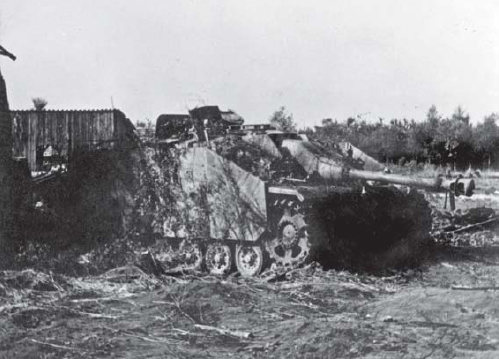
Through early September 1944, Wehrmacht units in the Netherlands were administered by the Wehrmacht Befelshaber Niederlands (WBN: Armed Forces Command Netherlands), which was primarily a military occupation command with some secondary defense responsibilities. Occupation duties were managed by the Feldkommandanturen at regional level with about 20 Ortskommandanturen in the smaller cities. So for example in the case of Nijmegen, Ortskommandantur 869, commanded by Hauptmann Ewald Linka, was responsible for military security forces in the city and the surrounding area, including Grenadier-Ersatz-Bataillon 337.
On September 4, 1944, Berlin instructed the WBN to begin to raise tactical defense units from the replacement, training, and security units in the Netherlands. The aim was to create a secondary defensive line called the Waalstellung, running along the Waal River from Moerdijk to Nijmegen. This was managed by General der Infanterie Hans von Tettau, the head of the WBN’s Führungs-und-Ausbildungsstab in die Niederlanden (Netherlands Command and Replacement Staff). This little-known effort in the first two weeks of September had profound implications for Market-Garden since the units mobilized by Tettau were later used as battlegroups in the first days of the fighting, and provided an embryonic core for the Division von Tettau that fought against the 1st Airborne Division in Arnhem.

One of the more common German armored vehicles in the Market-Garden campaign was the StuG III Ausf. G assault gun. This is a Luftwaffe StuG III Ausf. G of the under-strength Fallschirm-Sturmgeschutz-Brigade 12, which fought against the 82nd Airborne Division the Groesbeek sector. (NARA)
As Allied armies approached the Dutch frontier, German combat units withdrew into the Netherlands from Belgium, requiring the establishment of tactical command boundaries. On September 16, 1944, a day before the Allied operation, Generalfeldmarschall Model divided the Netherlands into three sectors, with the boundaries somewhat resembling a “T.” On the north side of the “T,” the WBN remained in control of the rear areas. The west side of the “T” including the North Sea coast was the responsibility of Zangen’s AOK 15, while the eastern side towards Germany and the Reichswald was the responsibility of Student’s 1. Fallschirm-Armee (Fsch-AOK 1).
Student’s field army was the formation most directly in the path of the American airborne landings. Fsch-AOK 1 had originally been a training command in Germany, but on September 4, 1944, Hitler issued a directive to transfer it to the Netherlands to create a defensive barrier shielding the Ruhr industrial region in Germany. The intention was to use the headquarters as the nucleus of an elite Luftwaffe parachute force, eventually including three Luftwaffe parachute divisions (3., 5., and 6.). None of these divisions were ready at the time and Student’s command was filled out using the handful of available paratroop regiments, as well as paratroop training and replacement units from the Netherlands. The largest source of troops in the opening phase of the battle was Fallschirm-Panzer-Ersatz-und-Ausbildungs-Regiment “Hermann Göring” based near Utrecht. With so many Luftwaffe aviation units being grounded in the summer of 1944 due to fuel shortages, this training regiment became bloated to almost divisional strength with 12,000 troops in August 1944. Its commander, Oberst Fritz Fullreide, attempted to deploy the unit as an intact combat formation. Instead, it was fed into the battle piecemeal, many of its units serving as bits of Tettau’s Waalstellung. This has led to some confusion over the identity of German paratroop formations in the battle since many bore the name “Hermann Göring” (HG) but this had nothing to do with the combat division of that name.
The only major paratroop formation that was on hand was Oberstleutnant Friedrich von der Heydte’s Fallschirmjäger-Regiment 6. This unit had fought against the US paratroopers in Normandy in June 1944, and, after being decimated, it was withdrawn to Germany for reconstruction. Although nominally back to full strength by early September, Von der Heydte described the regiment’s readiness as low since about three-fourths of the troops were untrained new replacements, most of whom had not even received rifle practice. Another paratroop unit, Battalion Finsel (I./FJ.Rgt. 2) was also sent to the Netherlands at this time, but Von der Heydte regarded it as a “rotten apple” with low combat value, poor leadership, poor discipline, and “addicted to arbitrary action, looting and outrages against the civilian population.” These two units detrained in Tilburg along with a partially organized parachute regiment and they were amalgamated under a temporary command, variously designated as Kampfgruppe Walther or Division Walther after its commander, Oberst Erich Walther. Another three parachute training regiments reached the Eindhoven area where they were hastily consolidated into Fallshirmjäger-Lehr-Division Erdmann under Gen. Lt. Wolfgang Erdmann. A parachute anti-tank battalion and about 5,000 Luftwaffe service troops arrived in ’s-Hertogenbosch where they were assigned to a temporary Kampfgruppe.
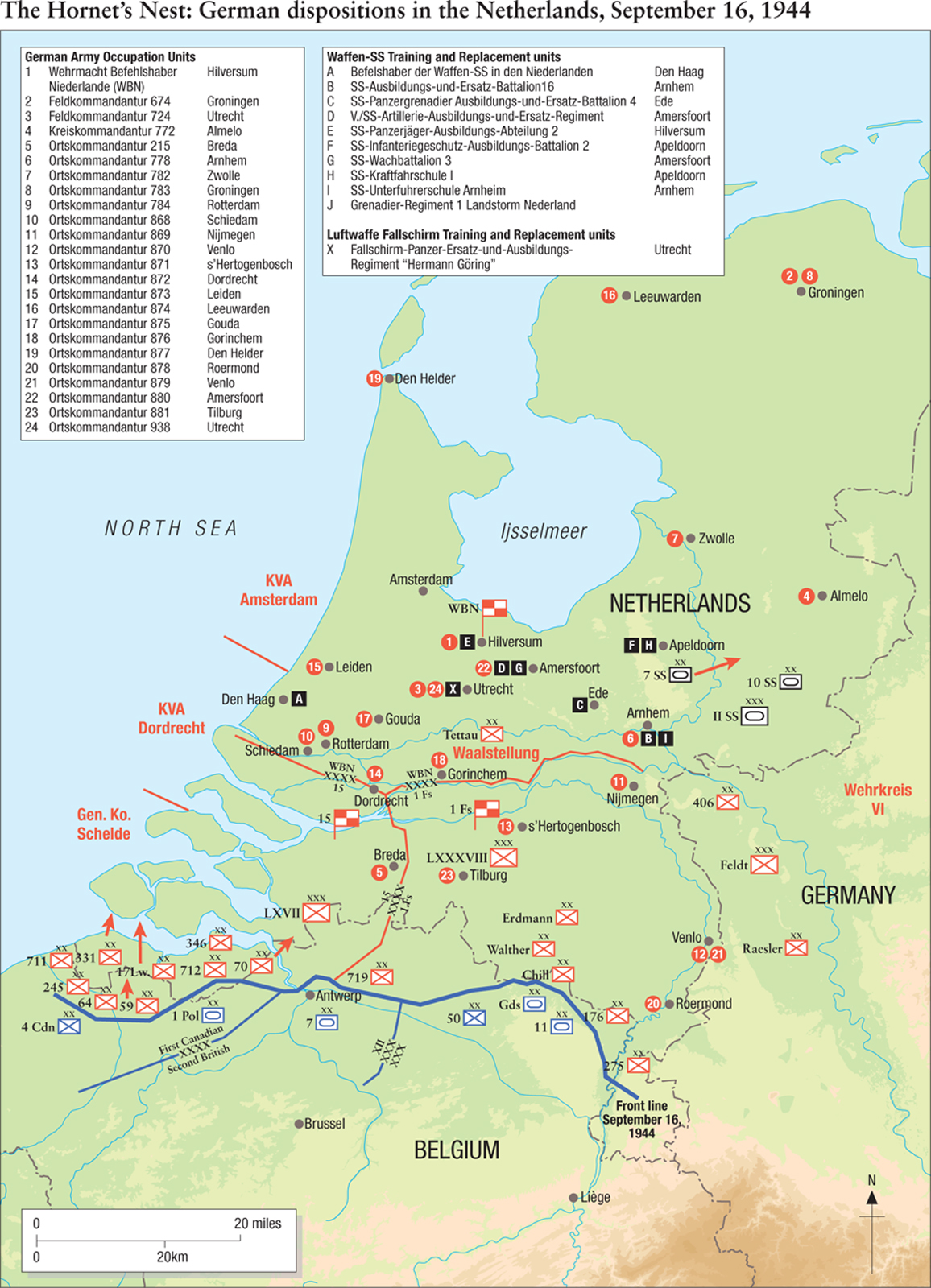
Lacking the intended parachute divisions, Student’s Fsch-AOK 1 headquarters took over the units already in place in southeastern Netherlands and northern Belgium under the German military occupation command. Initially, its only significant unit was the 719. Infanterie-Division. This unit had originally been configured as a static division for coastal defense and had been deployed on the Dutch coast until August 1944. It was reorganized as a conventional infantry division after re-equipment with horses, some vehicles, and field artillery, and on September 9 it had a combat strength of 4,515 infantry. On September 4–5, the division was deployed along a perilously long defensive perimeter about 50 miles in width. The corps headquarters assessed its combat value (Kampfwert) as 3: suitable for defensive missions. Due to the extended front, Gen.Lt. Karl Sievers concentrated his forces on his western flank around Merksem, where he expected that the British 7 Armoured Division would strike next during its advance out of Antwerp. The division fought against British forces from September 6 to 12. The division’s forces on the eastern side of its perimeter were paltry and consisted of a number of strongpoints with undefended stretches in between. The only reinforcements came from a battalion of the Dutch Waffen-SS, II./Grenadier-Regiment Landstorm-Nederland, near Hasselt, and some improvised units created from idle Luftwaffe ground personnel.
Curiously enough, the strongest forces in the sector were not supposed to be there at all. Generalleutnant Kurt Chill’s 85. Infanterie-Division had been smashed in France. The remnants of this division, along with some stragglers from 84. and 89. Infanterie-Divisionen, reached Turnhout in early September and were ordered by AOK 7 to continue their withdrawal to the Rhineland for reconstruction. When Brussels fell to the Allies on September 3, 1944, Chill took it upon himself to establish a defense line along the Albert Canal. At the time, his troops numbered barely a thousand men. One of the main outcomes of this decision was that the canal defense line served as a collection point for numerous stragglers, mostly Luftwaffe ground personnel and Flak troops retreating from air bases in France. These brought the unit strength up to about 4,250 men. Within a few days, “Kampfgruppe Chill” had created a viable if spotty defense force along the canal.
Aside from these units, the Wehrmacht forces facing the Allies in Operation Market-Garden were a jumble of rear-area troops including military police, line-of-communications troops and occupation units. For example, the 156 German troops captured by the 82nd Airborne Division on September 17 came from 28 different units, hardly any from combat formations.
An important source of fresh units during Operation Market-Garden was the neighboring military district command in the Westphalia region of Germany, Wehrkreis VI. Homeland military units along the frontier had been subordinated to OB West’s tactical command on September 9. This district was responsible for refitting shattered divisions and creating new units. Its proximity to the Netherlands was a major advantage to the German defense since units could be quickly sent to the battlefield. Many improvised units were sent into combat in the Netherlands a day after having been created. The desperate conditions of September 1944 forced it to convert its training units into improvised infantry divisions, sometimes called “shadow divisions.” General der Infanterie Franz Mattenklott recalled doing this “with a heavy heart,” fully realizing that it consumed the seed of future infantry divisions. Ersatz-Division-Stab 176 and 526 were sent into the field as Division Nr. 176 and Division Nr. 526 along the Westwall on either side of Aachen. The command staff and NCOs of the units were veterans, often with wounds that precluded them from frontline duty, but the divisions’ troops were inexperienced and partially trained recruits. On September 7, Division Nr. 176 was transferred to Student’s command to hold the eastern sector of the Albert Canal defense line.
In September 1944, Korps Feldt under General der Kavalerie Kurt Feldt was organized in the district to set up a hasty defense line along the German frontier using two improvised divisions – Division z.b.V.406 from Münster to Cologne, and Division Räßler from Cologne to Trier. After the Market-Garden landings, Korps Feldt was put in temporary charge of the attacks from Germany towards Nijmegen, using Division z.b.V.406. This unit was originally called the Special Administrative Division Staff 406 (Divisions-Kommando Stab zur besonderen Verwendung Nr. 406) and had directed regional militia forces including the Landesschützen militia and paramilitary engineer units in Wehrkreis VI. In the late summer of 1944, Gen.Lt. Gerd Scherbening was instructed to amalgamate an assortment of units into an improvised infantry division including district emergency alert units (Alarmineiten) from the Wehrkreis NCO schools (HUS: Heeresunteroffiziers-Schule) at the Wahn maneuver area near Cologne and Jülich, several “ear” and “stomach” battalions consisting of men with medical problems, a few Landesschützen militia battalions, and a Luftwaffe NCO school. The troops were short on infantry small arms and had few field guns; there were few motor vehicles so the unit was largely immobile. The Luftwaffe personnel were of good quality but with little or no ground training. Division z.b.V.406 was rushed into the field, first serving in a defensive role along the Westwall in place of Division Nr. 176, but later being committed to the Market-Garden fighting near the Groesbeek Heights.
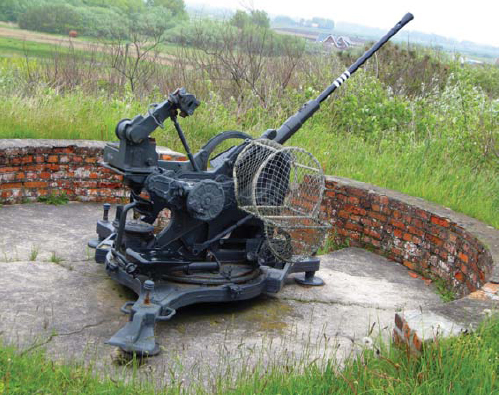
The Netherlands had an unusually heavy concentration of Flak batteries due to its location under the “bomber autobahn” between Britain and the Ruhr. One of the most widely encountered German support weapons during Market-Garden was the 20mm Flak 38 auto-cannon like this one currently preserved at the Domain Raversijde Atlantikwall museum. (Author)
The most significant German armored unit to face the US airborne divisions was Panzer-Brigade 107. It was formed from the remnants of the 25. Panzergrenadier-Division in Poland in July–August 1944. Although intended for the Russian Front, on September 15 it was assigned to OB West and arrived in the Netherlands on September 18–19. It was close to full strength with 2,117 troops and 36 Panther tanks.
The most important source of improvised firepower in the Netherlands came from Luftwaffe Flak units. Since the Netherlands was under the “bomber Autobahn” from Britain to the Ruhr, numerous Flak batteries had been established against the Allied bomber offensive. In September 1944, Student’s command was given control of 20 Flak batteries, mainly from Flak-Brigade 18. These were attached to various units, with many divisions receiving a battery or more of 88mm Flak guns for use in the field artillery role. The 20mm auto-cannon batteries were used for direct fire support of various infantry and paratroop units, sometimes in an improvised mobile configuration, mounted on trucks.
A number of Waffen-SS units eventually became involved in the American sector of Market-Garden. As in the case of the Luftwaffe, the Waffen-SS had several training/replacement units in the Netherlands and these were used to form temporary battlegroups. In addition, Dutch Waffen-SS volunteers had been formed into a new Grenadier-Regiment 1 Landstorm-Nederland in 1943, with I./GR 1 assigned to the 85. Infanterie-Division, II./GR 1 assigned to the 719. Infanterie-Division and III./GR 1 along with headquarters units assigned to the Arnhem area.
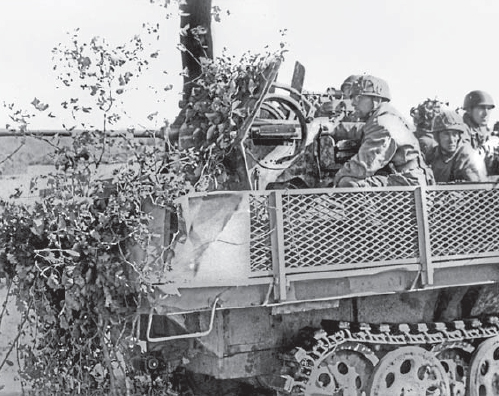
German units made extensive use of self-propelled Flak weapons for close-combat support against the Allied paratroopers. This is a 20mm Flak 38 mounted on an SdKfz 11/1 3-tonne half-track, used in the fighting against the 82nd Airborne Division around Mook. (NARA)
The most important tactical Waffen-SS unit in the Netherlands was II SS-Panzerkorps headquartered in Doetinchem east of Arnhem at the time of Market-Garden with its two Waffen-SS Panzer divisions. These units were withdrawing through Belgium in early September with the 10. SS-Panzer-Division “Frundsberg” reaching the Maastricht area on September 5, followed shortly after by the 9. SS-Panzer Division “Hohenstaufen.” At first, the plan was to concentrate these two divisions along with the 2. Panzer-Division and 116. Panzer-Division around Eindhoven for refitting, but this scheme was abandoned due to the speed of the Allied advance. On September 10, the corps was instructed to leave one division in the Arnhem area for refitting while the other returned to Germany; the 10. SS-Panzer-Division was selected to remain in the Netherlands and was headquartered in Ruurlo to the northeast of Arnhem. The area northeast of Arnhem was selected due to the heavy concentration of Waffen-SS training and replacement units in this area.
Due to the advance of the First US Army into Germany around Aachen, the corps was instructed to keep a Kampfgruppe ready as a rapid-reaction force for contingencies around Aachen. Instead, Kampfgruppe Heinke was committed to the area near Neerpelt shortly before Market-Garden to reinforce Division Walther in its fight with the British Second Army along the Meuse–Escaut Canal. After the start of Market-Garden, elements of the 9. SS-Panzer-Division that had returned to Germany were recalled to the Arnhem area and played a central role in the fighting against the British 1st Airborne Division around Arnhem. The 10. SS-Panzer-Division formed a number of battlegroups that were dispatched to the Nijmegen area to fight against the US 82nd Airborne Division. As of September 5, 1944, the division had a strength of 7,142 troops of its nominal strength of 18,979. Of these about 3,800 were combat troops and the rest were divisional support troops; Harmel estimated its actual combat strength on September 17 to be barely 1,500 men. It had very few tanks left.
Major German armored units in the Market-Garden area, mid-September 1944
| Pzkpfw IV | Panther | StuG | Jagdpanzer | Armored half-track | Armored car | |
| 9. SS-Panzer-Division | 5 | 21 | 58 | 5 | ||
| 10. SS-Panzer-Division | 16 | 4 | 21 | 78 | 11 | |
| Panzer-Brigade 107 | 36 | 11 | 157 | |||
| 1./s.PzJg.Abt. 559 | 6 | |||||
| StuG-Brigade 280 | 10 | |||||
| Fallschirm-StuG-Brigade 12 | 5 |
The Luftwaffe had minimal ability to provide any air cover for the army units in Belgium and the Netherlands. Luftflotte 3 had been pushed back to bases in Belgium and the Netherlands, but its forward bases were subjected to relentless air attack by the Allies. It had barely 175 serviceable combat aircraft by mid-September 1944. Fuel shortages and a lack of adequately trained aircrews limited air operations. Aside from fighter sweeps by units from neighboring airbases in Germany, ground-support missions were largely suspended in early September 1944, with a few rare exceptions such as the bombing attack on Eindhoven on September 19. On September 21, Luftflotte 3 was downgraded to Luftwaffen-Kommando-West under Luftflotte Reich.
The two principal US units committed to Operation Market were the 82nd Airborne Division and the 101st Airborne Division. These divisions deployed three parachute infantry regiments (PIR) numbering about 2,020 men each and one glider infantry regiment (GIR), numbering about 1,680 men each.1 Fire support was provided by four parachute and glider artillery battalions each equipped with 12 75mm pack howitzers; some units were beginning to receive the larger 105mm pack howitzer around this time. Most of the division’s antitank firepower came from the airborne antiaircraft battalion, which had eight 57mm anti-tank guns in each of its three batteries for a total of 24. Motor transport was very limited during the airborne phase, aside from motor scooters and a small number of jeeps delivered by glider. Divisional supply trucks arrived only after the initial landings via seaborne delivery from Britain.
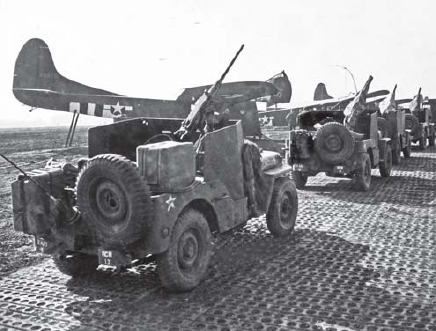
The only vehicles available to the US airborne divisions were ¼-ton jeeps, delivered by gliders. The 82nd Airborne Division’s reconnaissance platoon used modified armored jeeps in their two sections. (NARA)
The 82nd Airborne Division was the more experienced of the two, with elements of the division fighting in three major campaigns prior to Market-Garden. It took part in the Operation Husky landings on Sicily in July 1943, Operation Avalanche at Salerno in September 1943, and Operation Overlord in Normandy in June 1944. The 101st Airborne Division saw its combat debut during the D-Day landings in Normandy on June 6, 1944.
| 82nd Airborne Division |
| 325th Glider Infantry Regiment |
| 504th Parachute Infantry Regiment |
| 505th Parachute Infantry Regiment |
| 508th Parachute Infantry Regiment |
| 319th Glider Field Artillery Battalion |
| 320th Glider Field Artillery Battalion |
| 376th Parachute Field Artillery Battalion |
| 456th Parachute Field Artillery Battalion |
| 80th Airborne Antiaircraft Battalion |
| 307th Airborne Engineer Battalion |
| 307th Airborne Medical Company |
| 82nd Airborne Signal Company |
| 782nd Airborne Ordnance Maintenance Company |
| 407th Airborne Quartermaster Company |
| 82nd Parachute Maintenance Company |
| 101st Airborne Division |
| 327th Glider Infantry Regiment |
| 501st Parachute Infantry Regiment |
| 502nd Parachute Infantry Regiment |
| 506th Parachute Infantry Regiment |
| 321st Glider Field Artillery Battalion |
| 907th Glider Field Artillery Battalion |
| 377th Parachute Field Artillery Battalion |
| 463rd Parachute Field Artillery Battalion |
| 81st Airborne Antiaircraft Battalion |
| 326th Airborne Engineer Battalion |
| 326th Airborne Medical Company |
| 101st Airborne Signal Company |
| 801st Airborne Ordnance Maintenance Company |
| 426th Airborne Quartermaster Company |
| 101st Parachute Maintenance Company |
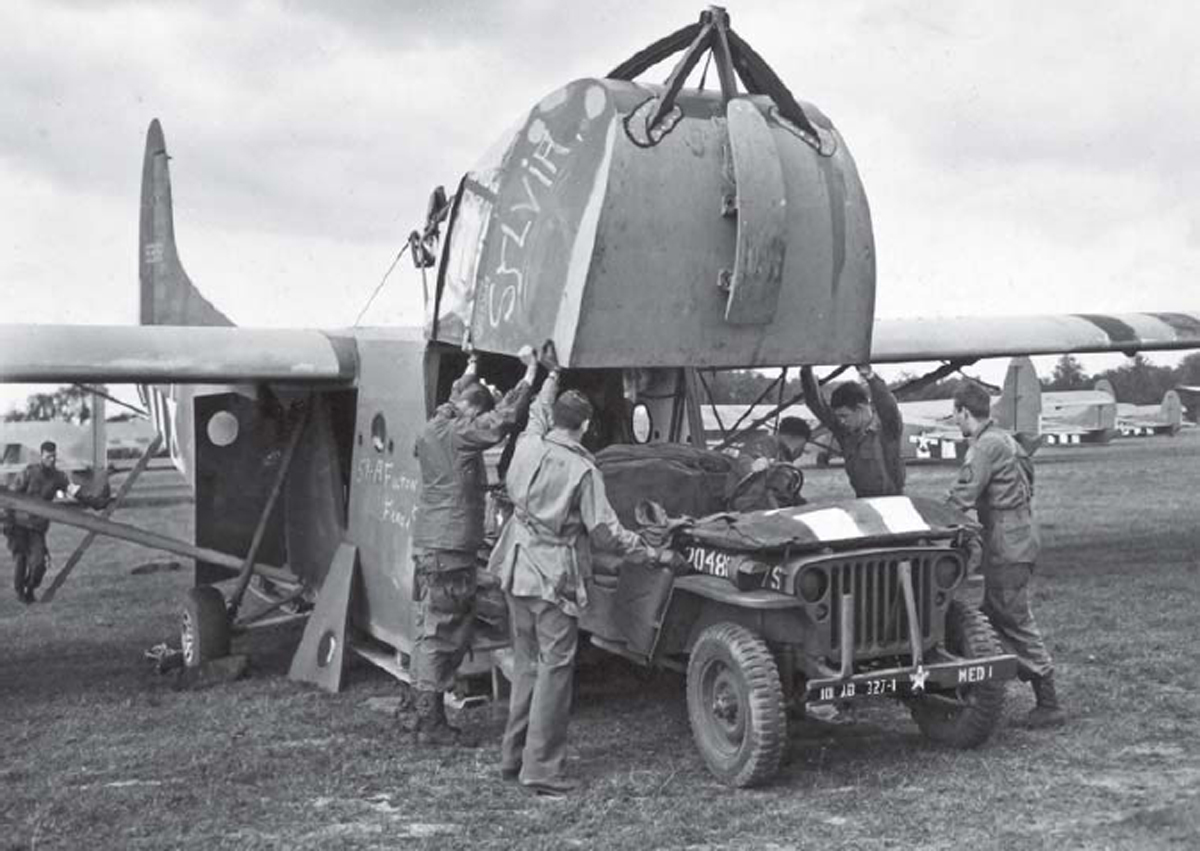
A jeep of the medical section of the 327th GIR is loaded aboard of CG-4A of the 434th Troop Carrier Group on September 17, 1944, part of the two glider serials conducted on the first day of Operation Market from Aldermaston. The prong fitted on the glider nose is a Griswold reinforcement added to the nose of CG-4A gliders to give the crew added protection. (NARA)
Although the primary focus of this book is on the US airborne divisions, the units of the British XXX Corps were inextricably linked to their operations. The unit most directly involved in the opening phase of Operation Garden was the Guards Armoured Division, commanded by Maj. Gen. Allan H .S. Adair.2 The division was organized in the usual fashion with the tanks under the 5th Guards Armoured Brigade and the motor infantry under the 32nd Guards Brigade. In practice, the division fought in four combined-arms “groups” teaming tanks with infantry. So for example, the Irish Group included the 2nd (Armoured) Battalion Irish Guards and the 3rd Battalion Irish Guards. Typically the Grenadier Group and Irish Group served in the 5th Brigade and the Coldstream Group and Welsh Group in the 32nd Brigade. The division had seen its combat debut in Normandy in mid-July 1944 and was attached to XXX Corps on August 27 to take part in the pursuit into Belgium. Following the liberation of Brussels on September 3, 1944, the division was heavily involved in the fighting to breach the German defense lines along the Albert Canal and Meuse–Escaut Canal.
One of the less-heralded aspects of Allied forces in Market-Garden was the role of the Dutch resistance. The Allies had an active hand in encouraging the Dutch underground movement, and had assembled special operations teams, the Jedburghs, to serve as the intermediary. Each of the Allied airborne divisions along with the British 52nd Lowland Division (Air-portable) had an assigned Jedburgh team, which included Dutch nationals, often recruited from existing Commando units. The 82nd Airborne Division was assigned Team Clarence, with an additional dozen Royal Dutch Commandos assigned to provide interpreters and liaison down to battalion level. The 101st Airborne Division was assigned Team Daniel II, as well as ten Royal Dutch Commandos for interpreter support. The US divisions also recruited Dutch-speaking Americans to assist in the liaison role. Besides the Jedburgh teams, the OSS (Office of Special Services) had deployed the Melanie Mission into the Netherlands to conduct deep reconnaissance. The Dutch resistance proved to be an invaluable asset for the American airborne divisions. With the assistance of the Jedburgh teams, the Dutch resistance was able to provide timely tactical intelligence. In addition, there was extensive ad hoc support including the collection and guarding of prisoners, security patrols, and other armed support. On instructions from the Dutch government-in-exile, the resistance staged a national railroad strike for ten days that severely compromised the use of Dutch railways for the transport and supply of German troops in the Netherlands during the first weeks of fighting.
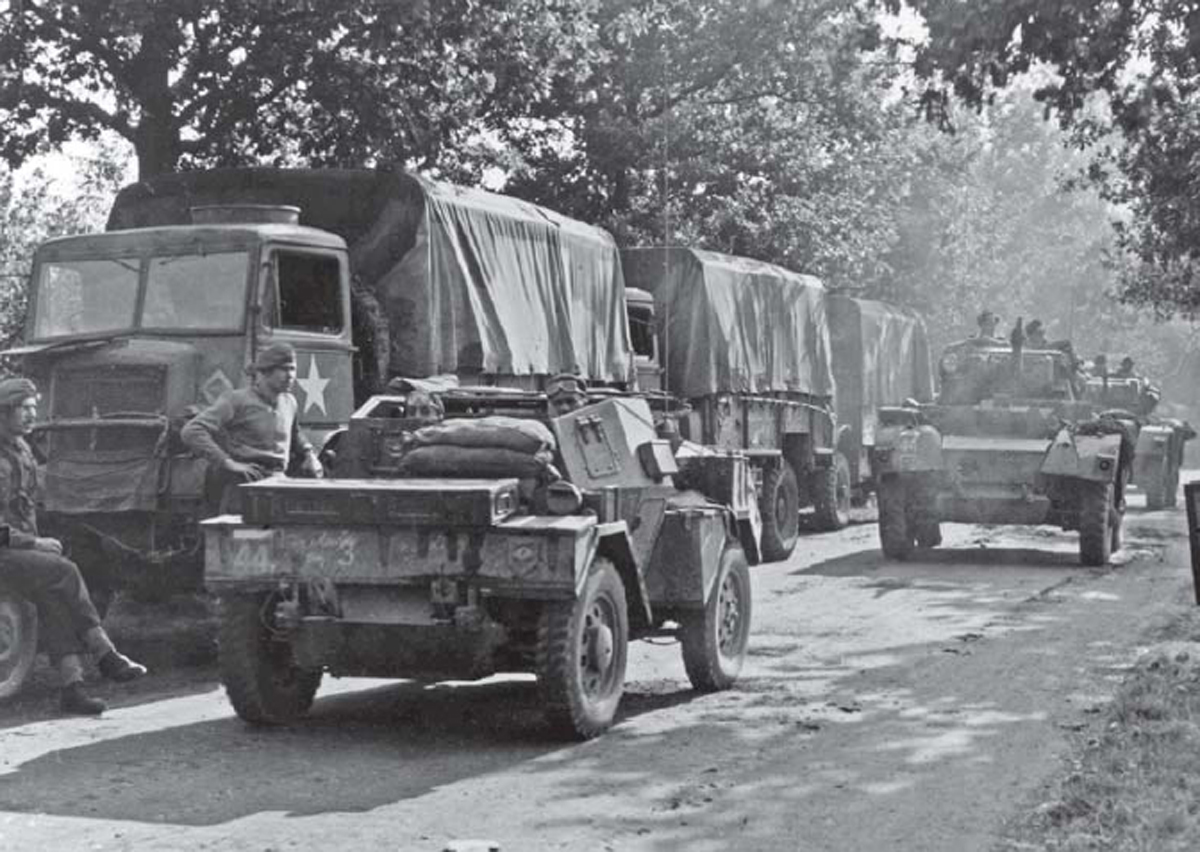
The spearhead of the XXX Corps advance was the 2nd Household Cavalry, the divisional reconnaissance element of the Guards Armoured Division. Here, a Daimler Dingo scout car leads some Daimler Mk. 1 armored cars past a column of Bedford QL lorries at Overasselt near the Heuman Bridge on September 19. (NARA)
1 Further details on organizational issues can be found in: Steven Zaloga, Battle Orders 25: US Airborne Divisions in the ETO 1944–45, Osprey Publishing, Oxford (2007).
2 For further details see: John Sanders, Vanguard 9: British Guards Armoured Division 1941–45, Osprey Publishing, London (1979).